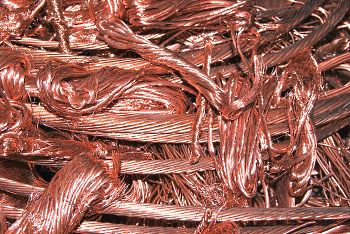property>electrical conductivity
What is Electrical Conductivity?

Electrical conductivity is a material's ability to conduct an electric current when an electrical potential difference is applied across it. It is also known as specific conductance, and should not be confused with conductance which is a property of a component, whereas conductivity is a property of the substance from which the component is made. The SI unit of electrical conductivity is the siemens per metre (S/m). Conductivity is the inverse of resistivity. The conductivity, σ, is given in terms of current density, J, and electric field strength, E, using the expression:
J = σE
Materials of high conductivity include metals, especially copper and silver. Silver actually has the highest electrical conductivity but is too expensive for general use for electrical wiring. Copper is the next best choice and is normally used for any type of electrical wiring. Gold is also a good conductor, although not as good as copper and more expensive than silver, but it does have the additional advantage of being corrosion resistant and so is often used as a plating for electrical contacts. Aluminium is often used for overhead power lines because it is a reasonable conductor but has the additional advantage of being light in weight.
At the other extreme, air is an excellent insulator, as are most plastics, ceramics and glass. Air will eventually break down and ionize if there is a sufficient potential difference. Moist air has a higher conductivity and it can often be heard crackling in the vicinity of high-tension power lines when humidity is high.
Pure water has a fairly low conductivity, but the presence of ions caused by electrolytes, for example, salts, will greatly increase the conductivity. Measuring the conductivity of water can be used as an indication of salt concentration. Dry materials, such as building materials (wood, brick, plaster) will have low conductivity but this will increase if the materials become damp. The presence of moisture can therefore be detected by measuring its conductivity, and this principle is used in surveyor’s instruments for detecting damp in buildings. The electrical conductivity of the human body can also be measured, and is mostly accounted for by the amount of perspiration in the vicinity of the electrodes. This can be used to detect stress in a lie detector test.
Conductivity is measured in the same way as electrical resistance.